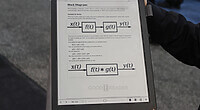
The book industry has certainly been overwhelmed since the beginning of 2014 with information gleaned from author surveys on their satisfaction with publishing, in all of its forms. The first survey, conducted by Digital Book World and Writer’s Digest magazine, already contained a mild slant given that the thousands of survey respondents were subscribers to a decidedly pro-traditional industry publication. The second survey, published by Author Earnings, polled 900 authors on their publishing mode, their numbers of books published, the “ballpark” figure of their earnings last year, and their future publishing decisions.
But why isn’t anyone saying what we all want to hear: How many books did you sell?
The answer is they can’t. It’s a little known fact that the terms of service for both Amazon and Barnes and Noble prohibit openly discussing exact sales figures, even for self-published authors; Kobo’s terms of service cannot be discussed as they pertain to this article because the Writing Life terms of service forbid even disclosing what’s contained in the terms of service. This disclosure for all companies apparently even extends to so much as a lowly blog or Facebook post, preventing a self-published author from even sharing with his own followers that he’s celebrating the sale of his 100th copy of his book, for exmaple.
Author Susan Wingate found that out the hard way. After posting on her own blog in June of 2013 information that showed (in general numbers) that she was selling more titles on Barnes and Noble than Amazon, her account was blocked by Amazon. Their reason was for violating the terms of service, specifically relating to KDP Select. Rather than block access to the three titles enrolled in KDP Select, Amazon blocked the author’s access to her entire account, including the twenty-one other books that she had written and that were not part of Select.
This begs the question, why is the industry so afraid of open transparency where book sales are concerned? Is there some fear of competition among publishers? Is it the perception that a heavily invested and industry-supported title must not be that good if the sales aren’t meeting public expectations? Is it simply a belief that control of data is the lifeblood of these companies?
When JK Rowling published her first Robert Gilbraith novel, the sales were unimpressive at only 1,500 copies the first month; of course, the number skyrocketed when the author’s true identity was revealed, selling out the book in bookstores and requiring additional print runs. Obviously, the discovery that the book hadn’t sold enough copies to even pay for the printing wasn’t a deterrent to readers who wanted another title by a popular author, so guarding the information on sales figures didn’t matter in the minds of the readers.
The surveys, while incomplete–and in once case, prohibitively expensive–do still serve to spark the discussion that authors like JA Konrath, HM Ward, and Hugh Howey have been igniting for some time. Transparency isn’t a threat to authors, and not to anyone else in the book industry. It actually serves to help authors understand which publishing decisions are right for them. The only people who stand to benefit from keeping a tight lid on data would be people who have something to hide, or worse, a means of making money off the backs of people who don’t have all of the information.
Mercy Pilkington is a Senior Editor for Good e-Reader. She is also the CEO and founder of a hybrid publishing and consulting company.
